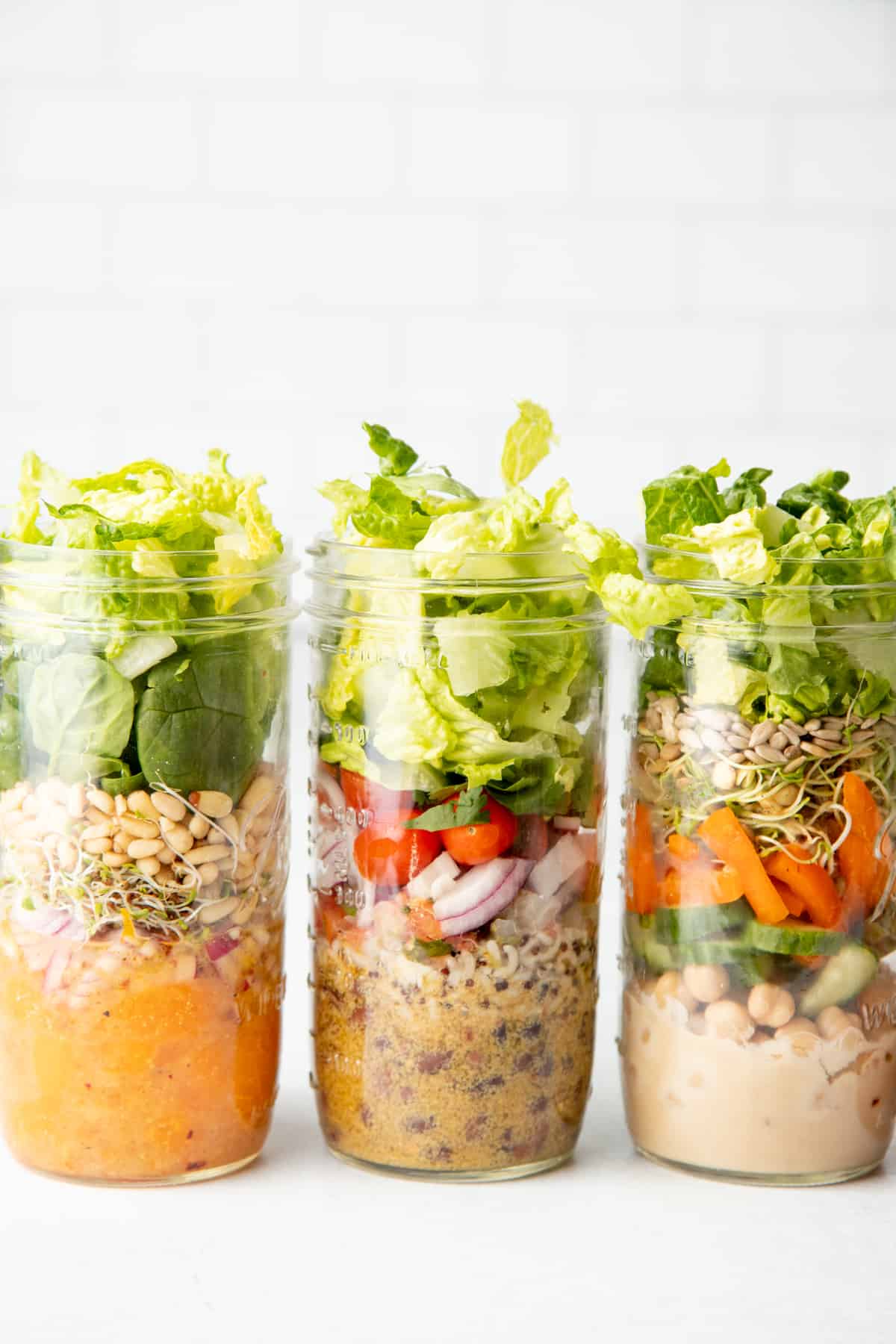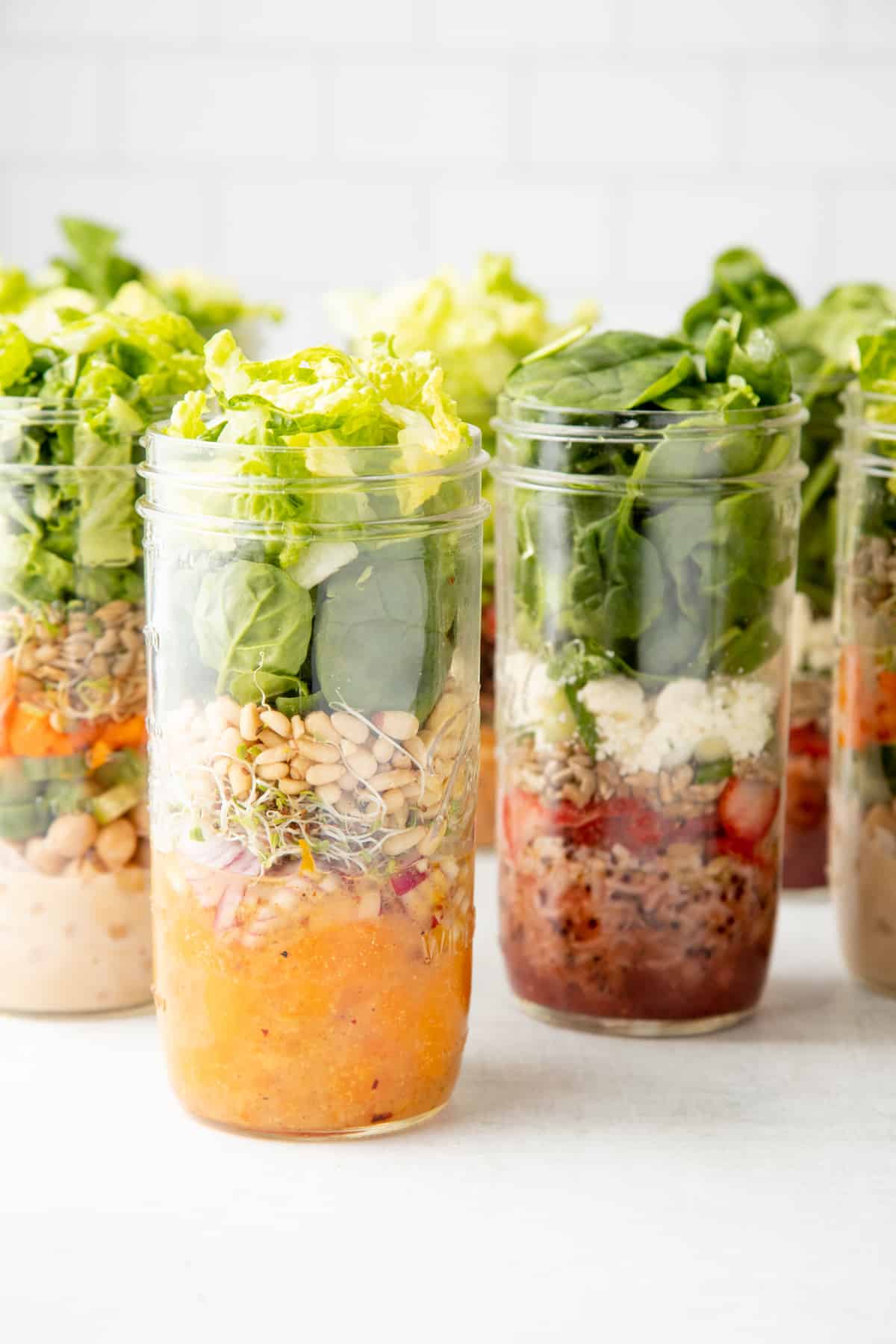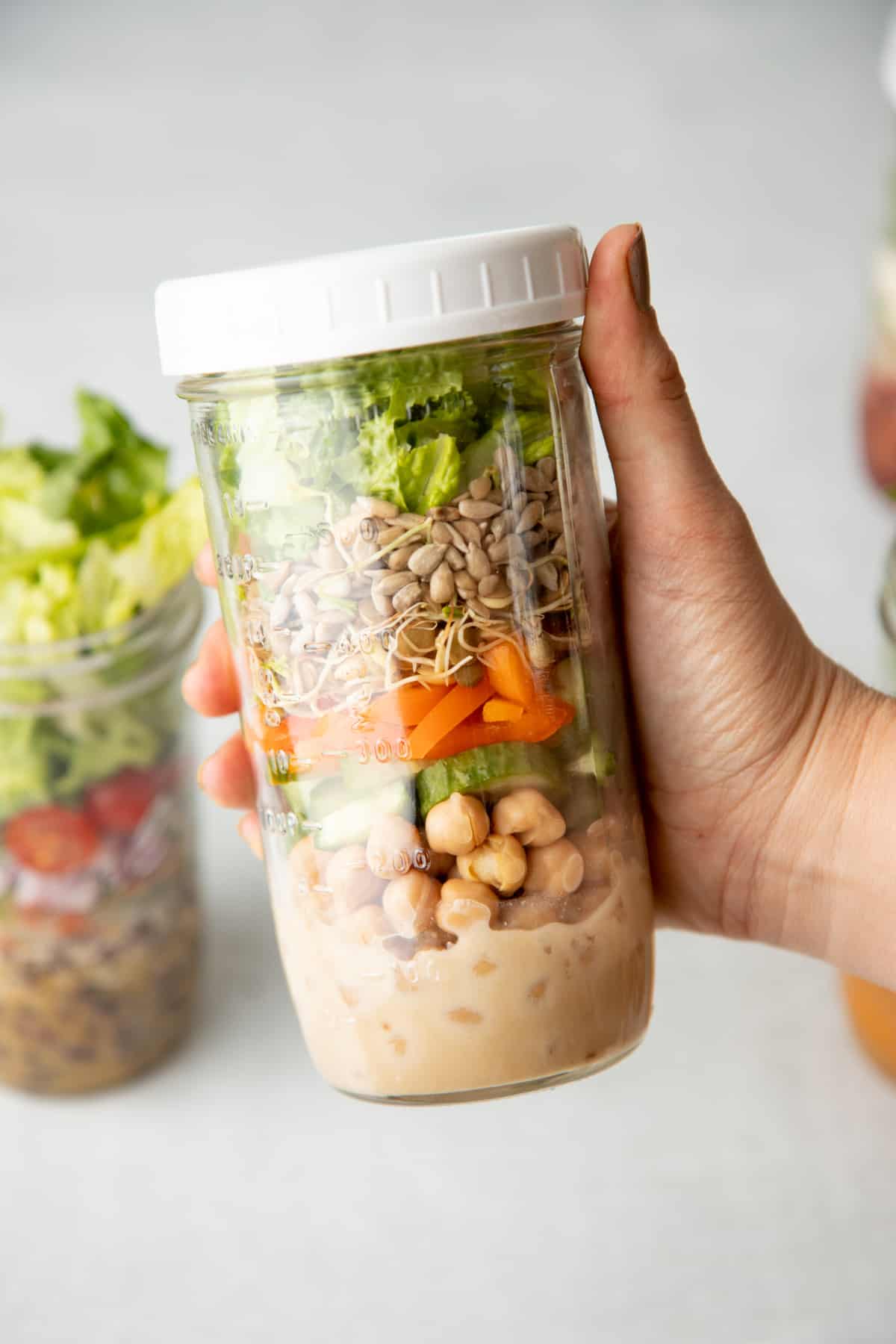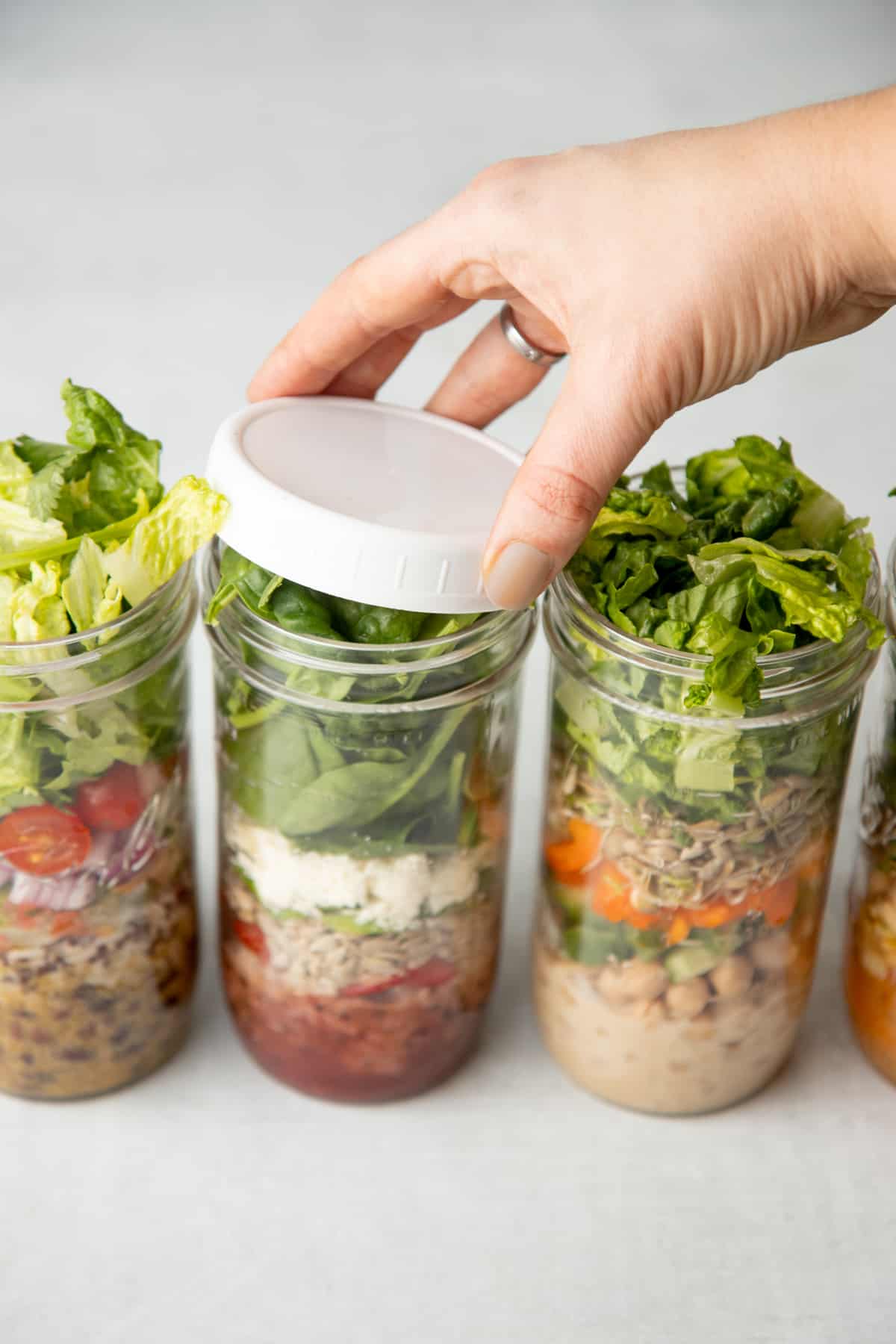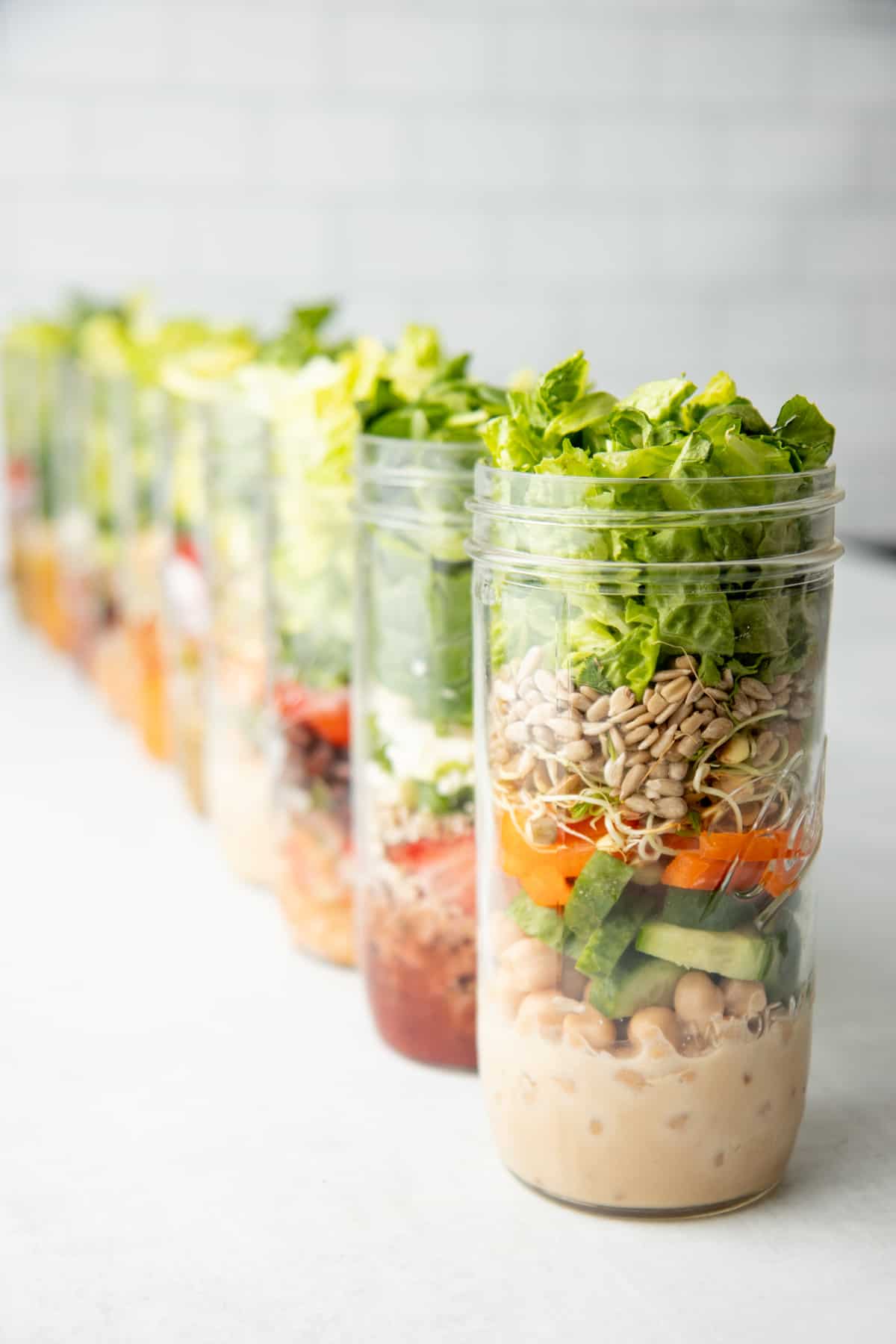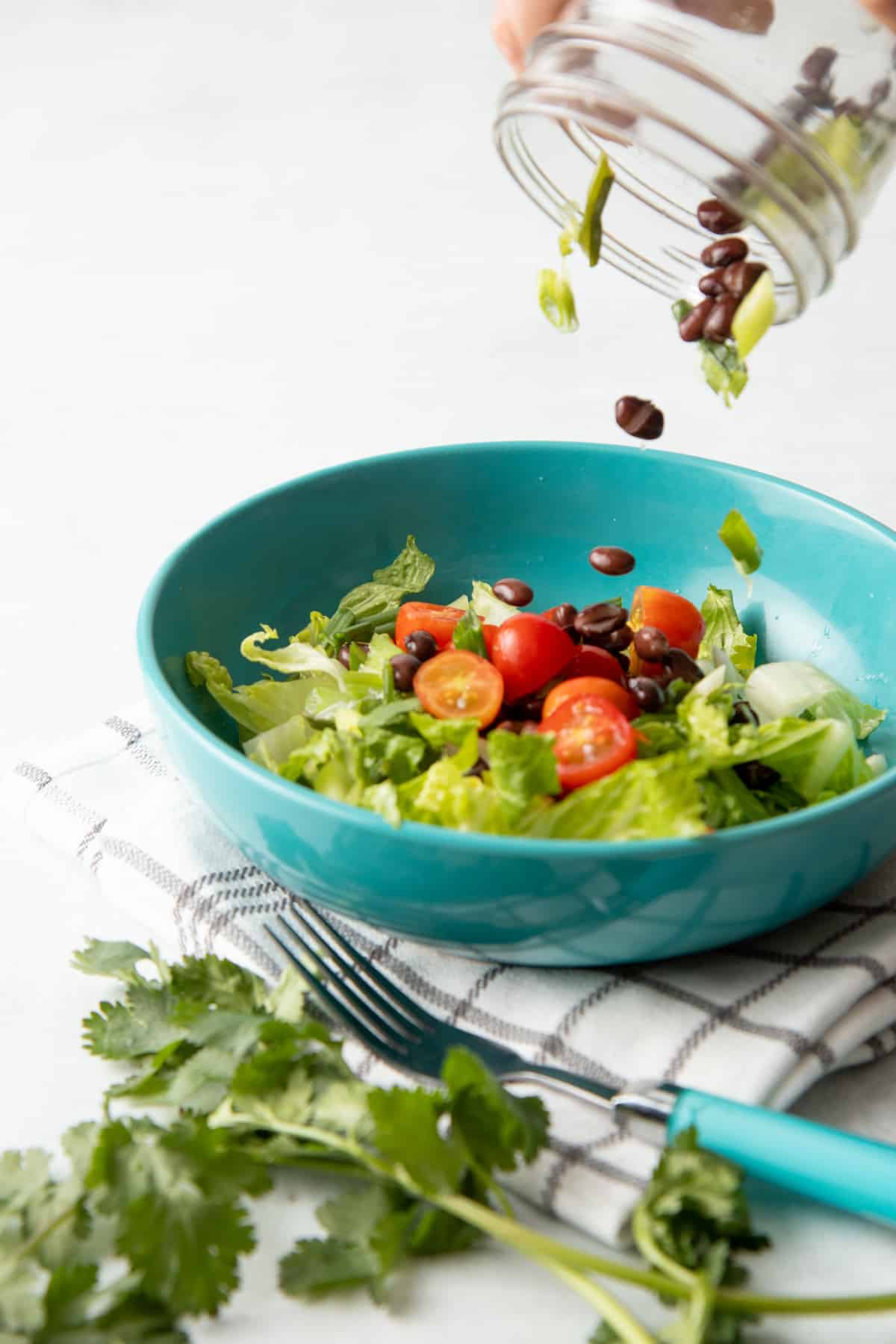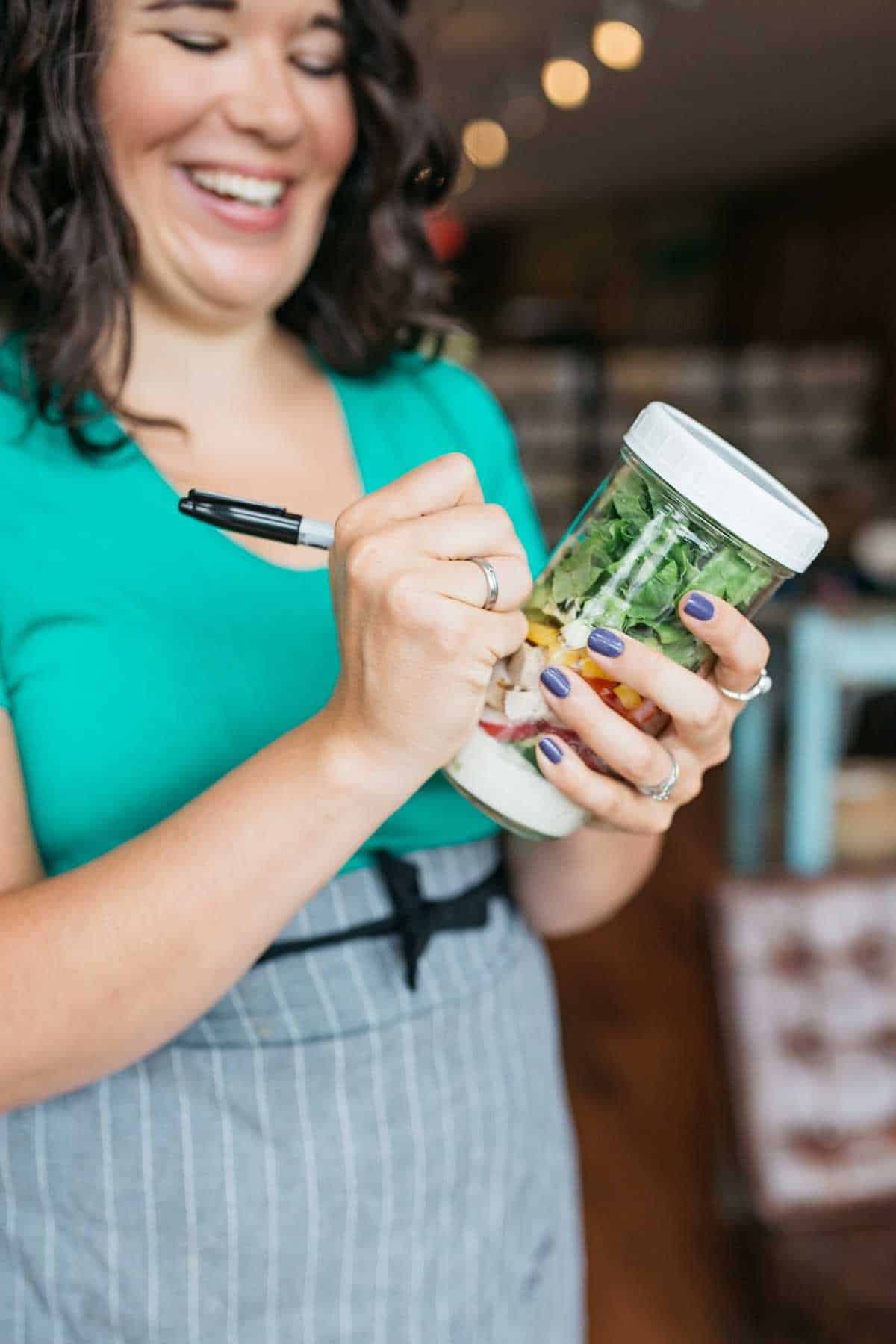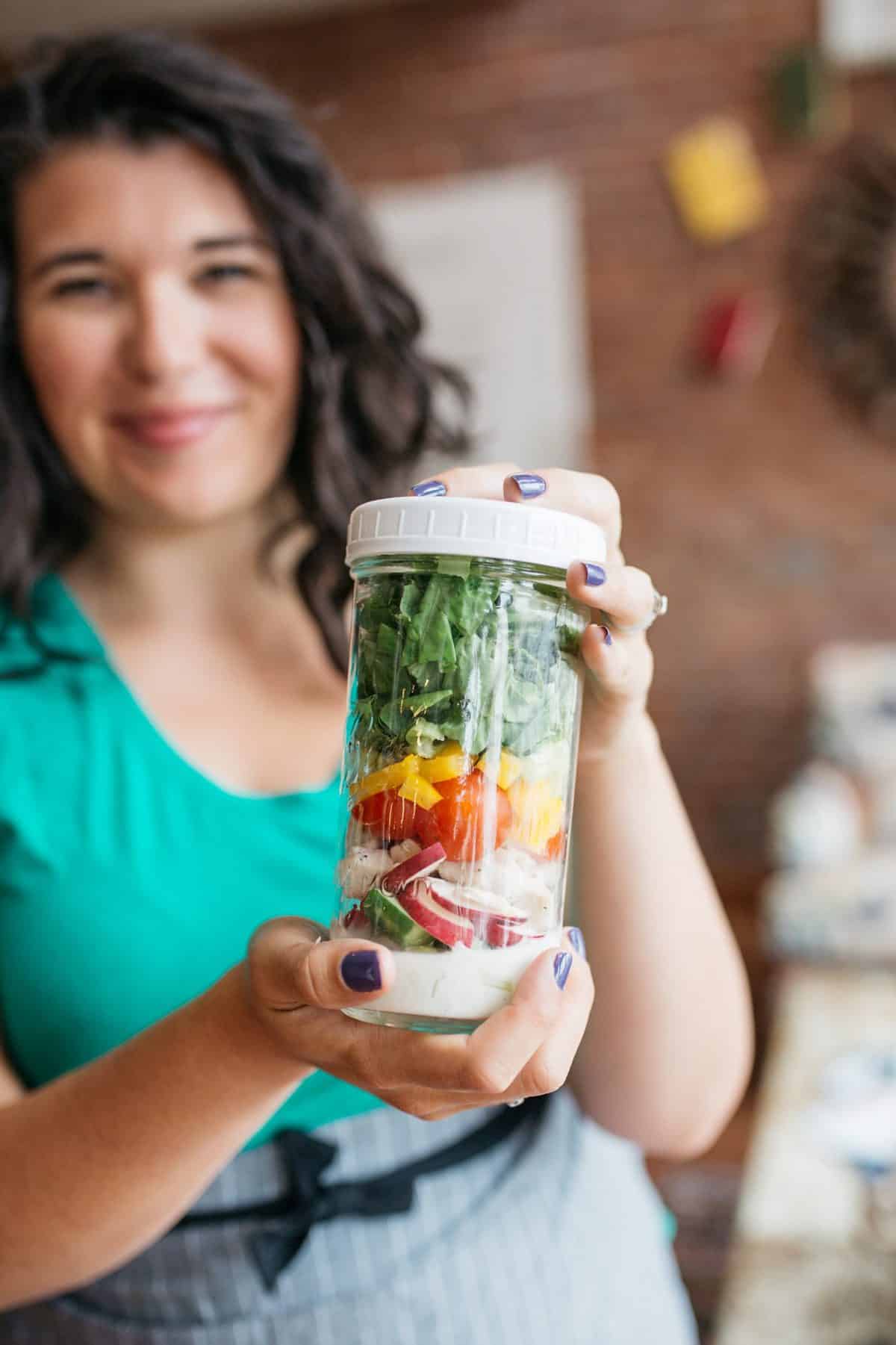
When I first discovered mason jar salads about 10 years ago, it created a huge shift in my eating habits. Before learning how to meal prep salads, eating a salad for lunch always seemed like such a hassle! It took forever to get everything cut up and ready to go. I really enjoyed eating salad for lunch, but not as much as I loathed the inconvenience of it all.
Then enter salads in a jar—pre-made, perfectly fresh salads just sitting in the fridge waiting to be enjoyed. I was sold! And I haven’t looked back. I’ve been making mason jar salads weekly for almost a decade, and it’s my single biggest trick to getting on the healthy eating bandwagon. If you make nourishing food the easiest choice, it’s going to be what you choose. And my goodness, are mason jar salads easy!
Hold up, but how do you keep the salad from getting soggy and the lettuce from going limp?
This is the very first question I get from mason jar salad skeptics—doesn’t the lettuce go limp? Doesn’t it get all soggy? Nope, nope, and nope! If you stack the jar in the proper order (more on that in a sec), you’ll have lettuce on day seven that is just as crisp and fresh as the day you packed it. I promise!
How do you pack a mason jar salad so it doesn’t get soggy?
The key to a good salad in a jar staying fresh all week long is the packing order. All you have to remember is one thing—keep the wet ingredients away from the greens. This means that things like salad dressing, chopped tomatoes, salsa, guacamole, etc. go to the bottom of the jar and greens go at the very top of the jar, with a buffer of other ingredients in the middle. That way, if you keep the jar upright, everything stays in its place. Not a soggy leaf of lettuce in sight!
What’s the best size jar to use for mason jar salads?
All size jars work for salads in a jar, so it’s more a question of what size salad you want in the end. I do recommend going with wide-mouth jars, just because they are easier to pack, but regular-mouth jars work as well. Here’s a quick guide to mason jar salad sizes:
- Jelly Jar (8 ounces)—This is usually too small to pack a mason jar salad in, but I have occasionally packed one for my young child in this size. For slightly more space, a 12-ounce jelly jar is also a good kid-size salad.
- Pint (16 ounces)—This is a good size for a side salad. I like to use this size when I’m combining a salad with a soup in a jar for lunch. These can also be used for a light lunch or a snack.
- Pint and a Half (24 ounces)—These are my FAVORITE size jars for mason jar salads! They are big enough to be a full meal, but not so huge that you need to dump it into a mixing bowl to eat it. In fact, this jar is my favorite of all the canning jars because it’s one of the most flexible—I use it for everything from freezing bone broth to canning tomatoes.
- Quart (32 ounces)—If you’re a super veggie-lover, a quart size is a good option for a dinner-sized salad for one, or a lunch-sized salad for two. It also works as a side salad for 3-4.
- Half-Gallon (64 ounces)—This big, bad mamma jamma is a good size for pitch-ins, potlucks, or big families. I sometimes will make ahead a nice salad for a potluck and stash it in one of these in the fridge so it’s ready to go when I am.
Do you have to use a canning jar or can you use something else?
Canning jars work well because they don’t absorb smells and flavors like plastic, they last forever, and they are tall and skinny—the key to making sure your salad doesn’t go limp. If you want to use upcycled glass or plastic jars (like from pasta sauce), you absolutely can—just as long as it has a lid that seals well and is tall and skinny, you can use it!
I do not recommend meal prepping salads into wide containers where the dressing has a higher chance of coming in contact with the greens. The key here is to get as much separation as possible between the dressing and the greens, and the way to do that is through a tall, narrow vessel.
What’s the best lid for a mason jar salad?
Any well-fitting lid will work to keep your salad fresh, but I really like the plastic storage caps for mason jars from Ball Canning. They are great because they don’t rust, are easy to clean, and are a single piece—no searching for both a lid and a ring to close your jar.
How long do mason jar salads last in the fridge?
What ingredients you use in your salad will impact how long it can last in the fridge, but I will say a salad made of just dressing and veggies will easily last 7-10 days in the fridge. Yes, really! Toward the end of that time, your lettuce might start to look “rusty” (it’s actually not rust, it’s called “russet browning,” and it’s caused by exposure to ethylene gas—and it’s completely safe to eat), but other than that, it’ll be good to go!
When animal-based products like meat and cheese are added to the mix, you’re looking at closer to 3-5 days in the fridge.
When you use sliced fruit in your jar, you’ll get the least amount of prep-ahead time out of it—I wouldn’t prep a fruit-containing salad more than three days in advance.
Are there any ingredients that don’t work well in mason jar salads?
Almost anything that you would put in a fresh salad can go into your meal prepped salads, with one exception: I recommend skipping foods that oxidize if you want the longest-lasting jar. Foods like avocado, apple, and pear are great additions to salads but even when treated with Fruit Fresh, they’ll only last a day or two in a jar salad. Which is fine if you’re just prepping for tomorrow’s lunch, but not if you’re trying to get through a full week. I tend to add those ingredients just before serving.
This sounds great, but how do you actually eat a mason jar salad?
My preferred method is to dump it and enjoy! Some people try to shake the salad and then eat it in the canning jar. But because I pack the ingredients in so tight, I don’t really get good distribution if I do that, and so I always carry a salad bowl with me. When I was working in an office, I kept a bowl for my mason jar salads right in my desk! When lunch was over, I’d just rinse it out in the office kitchen and pack it away in my desk drawer for the next day.
My protips for making fresh, crisp, healthy mason jar salads that’ll last all week in the fridge:
I’m the self-proclaimed world’s foremost expert in mason jar salads (ha!), and here’s what I’ve learned over my literal thousands of jar-packing experiences:
- Liquid ingredients on the bottom, greens on the top. Keep this in mind, and you’ll be able to “go rogue” and experiment with crafting your own mason jar salad creations!
- Really jam-pack the jars full. Not only does this give you the most veggies for your space, but it also helps keep things from shifting and moving around (which is particularly helpful if you are packing a jar in a lunchbox and it happens to tip over on its side). I shove so many greens in that I have to hold them down with one hand while I place the lid on with the other. It should be like a lettuce jack-in-the-box when you open that jar!
- Use the fridge time to your advantage by marinating foods in the dressing. Cooked grains, tofu, chicken, beans—they all will soak up some of the flavor of the dressing.
- Keep your jar upright. This is not the time to let your lunch roll around on the floor of your car (anyone else? just me?). Keep that jar upright so the dressing stays at the bottom.
- Label, label, label your jars! If you get into making salads in a jar, you’ll want to really keep track of what’s in your salads and when they were made. My best trick for labeling mason jar salads (and any food stored in glass) is to write on the glass with a Sharpie. When it’s time to clean the jar, a quick swipe of a cotton ball soaked in rubbing alcohol takes the writing off the jar.
Ready for some mason jar salad recipes?
At the bottom of this article, you’ll find a basic formula for making salads in a jar that you can follow to craft your own fun salads, but if you’re looking for some salad inspiration, boy do we have you covered! Here are all of our home kitchen tested salad in a jar recipes:
- Recipe 1
- Recipe 2
- Recipe 3
- Recipe 4
FAQs
How long do mason jar salads last in the fridge?
Mason jar salads can last 7-10 days in the fridge if they only contain dressing and veggies. When animal-based products like meat and cheese are added, they typically last 3-5 days. Salads containing sliced fruit should not be prepped more than three days in advance.
Can I use something other than a canning jar for mason jar salads?
While canning jars are recommended for their durability and shape, you can use upcycled glass or plastic jars with well-sealing lids as an alternative.
Thank you for exploring the world of mason jar salads with Takeout Food! For more culinary inspiration, visit the official website here. Happy salad prepping and enjoy the goodness of fresh and convenient meals!
